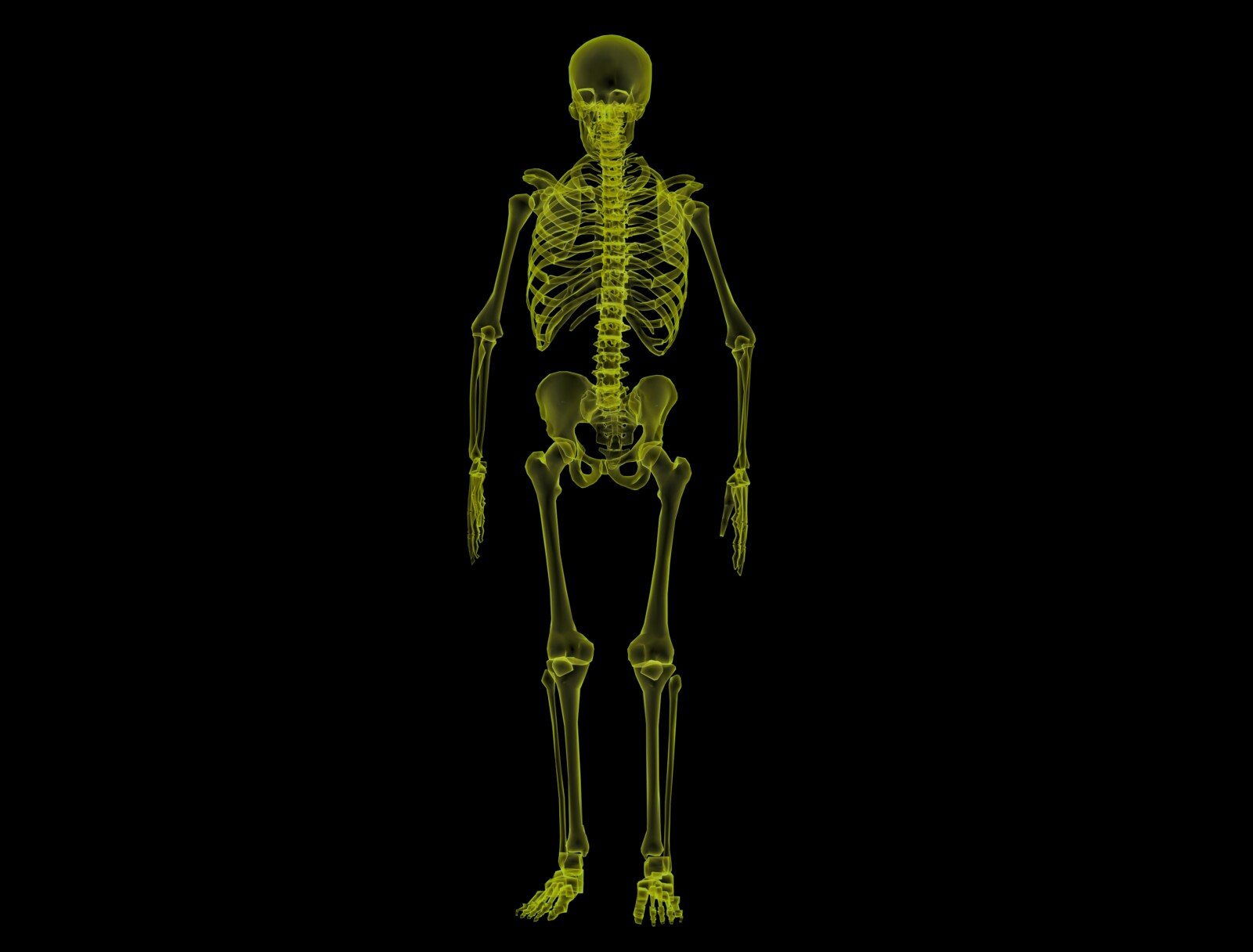Omnilife Hip Replacements: A Catastrophic Legacy
This article examines the ongoing controversy surrounding OMNIlife hip implants, focusing on their high failure rate and associated complications. It explores the design flaws, notably the cobalt-chromium modular connection, and their potential impacts, such as metallosis and ALVAL. Additionally, it provides an overview of the ensuing litigations and the implications for affected patients. The analysis contributes to a broader understanding of the liabilities and consequences of failed hip replacements.

Key Takeaways
- OMNIlife Apex hip replacements have a high failure rate and complications, including loosening, subsidence, migration, fractures, and corrosion.
- Patients may suffer from metallosis due to breakdown and corrosion of the implant, resulting in pain, tissue reactions, and aseptic, lymphocyte-dominated vasculitis-associated lesions (ALVAL).
- The OMNI Apex K2 hip replacement, FDA-approved in 2004, has a modular design with a titanium alloy stem and neck, and a cobalt-chromium anti-rotation peg.
- Lawsuits are pending against OMNIlife Science related to patient injuries caused by their hip implants, and settlements and verdicts in hip replacement lawsuits have already exceeded $7 billion.
The History of OMNIlife Hip Replacements
Since OMNIlife's acquisition of Apex Surgical in 2004, the company has faced significant scrutiny due to the high failure rate and numerous complications associated with their FDA-approved Apex K2 Modular Hip System implants. The evolution of hip implant materials from predominantly ceramic and polyethylene to metal alloys such as titanium and cobalt-chromium has augmented these complications. Specifically, the OMNIlife implants' modular design has raised concerns about fretting and corrosion at the neck-stem interface, leading to particle release and adverse tissue reactions. Additionally, exploring the role of surgeon experience in OMNIlife hip implant failures, it's evident that incorrect positioning and improper sizing during implantation can exacerbate these issues, contributing to dislocation, implant loosening, and subsequent need for revision surgery.
Understanding the Design of OMNIlife Hip Implants
While the design of OMNIlife hip implants was initially praised for its versatility, allowing up to 96 configurations to accommodate unique patient anatomy, it has subsequently been criticized for its high failure rate and the serious health complications it can cause. The omnilife hip implant materials include a titanium alloy stem and neck and a cobalt-chromium anti-rotation peg. These materials, while durable, have been associated with corrosion, leading to complications such as metallosis. The omnilife hip implant customization, though considered a breakthrough, has come under scrutiny due to the potential for improper fitting and alignment, which can contribute to implant failure. As the debate continues, it highlights the critical need for rigorous testing and evaluation of implant materials and design customization to ensure patient safety.
The High Failure Rates of OMNIlife Hip Implants
Although the OMNIlife hip implants were designed to provide a customizable solution for hip replacement patients, the reality has been an alarming high rate of failure and resultant health complications. Analyzing reports, the failure rate of OMNIlife hip implants is significantly above average, with issues such as dislocation, infections, and detrimental reactions to metal particles. Further, the breakdown and corrosion of the implant's neck and stem cause metal particles to enter the bloodstream, leading to metallosis. As such, the need for stricter regulations is evident. It is crucial to ensure the safety and efficacy of such medical devices to protect patients from avoidable harm. The OMNIlife issue serves as a stark reminder of the potential dangers and unintended consequences of inadequately regulated medical technologies.
The Role of Corrosion and Fretting in Implant Failures
In the context of OMNIlife hip implants, the role of corrosion and fretting is crucial to understand, as it directly contributes to their high failure rate and severe health complications for patients. Corrosion, a chemical reaction accelerated by the body's biological environment, and fretting, a mechanical wear process, induce the degradation of the implant's metal components. This leads to the release of microscopic metal particles into the surrounding tissue and bloodstream, a condition known as metallosis. The impact of metallosis on patients is profound, causing severe inflammation, necrosis, and even systemic toxicity. The consequent need for revision surgery further exacerbates patients' distress. Therefore, addressing corrosion and fretting in the design and material selection of hip implants is an urgent necessity.
The Impact of Metallosis on Patients With Hip Implants
Metallosis, a harmful condition triggered by the wear and tear of hip implants, causes severe tissue damage and systemic toxicity in patients, and it often necessitates invasive revision surgery for treatment. This systemic toxicity is due to the release of metal ions into the bloodstream, leading to poisoning. The long-term effects of metallosis on overall health can be severe, including neurological and cardiovascular conditions, renal impairment, and even carcinogenesis. Potential treatments for metallosis primarily focus on surgical intervention to remove the faulty implant and clear the surrounding tissues of any metal debris. However, a more holistic approach is required to address systemic effects and overall patient well-being. Implementing regular patient monitoring, coupled with advanced diagnostic techniques, can aid in early detection and improved management of this complex condition.
OMNIlife Hip Replacements and ALVAL: A Dangerous Combination
The correlation between OMNIlife hip replacements and the development of Aseptic Lymphocyte-dominated Vasculitis-Associated Lesion (ALVAL) presents a significant health hazard, necessitating further study and attention. ALVAL, a severe immune response to metal debris, is increasingly identified in patients with these hip implants. Corrosion at the modular junctions of the implant releases metal ions that trigger ALVAL, leading to pain, inflammation, and potential implant failure. With ALVAL treatment options primarily surgical, understanding the pathophysiology is essential for prevention of hip implant complications. Innovations in surgical technique, implant design, and material selection can mitigate these risks. Furthermore, regular post-operative monitoring for early detection of metal ion levels in the bloodstream could significantly reduce the incidence of ALVAL in patients with OMNIlife hip implants.
Symptoms and Side Effects of Failed OMNIlife Hip Implants
Patients suffering from failed OMNIlife hip implants often experience debilitating pain and discomfort, and may exhibit symptoms such as implant loosening, mobility issues, and in severe cases, the development of pseudotumors due to metallosis. This metallic debris in the bloodstream can lead to various long term effects, including cognitive difficulties, depression, and chronic fatigue. The body's reaction to the metal particles can also cause local tissue damage and necrosis. Treatment options often involve surgical removal of the implant, followed by complex revision surgery. However, the damage caused by metallosis can have long-lasting impacts even after removal of the implant. Furthermore, the process of revision surgery is fraught with risks and potential complications, adding to the burden of patients with failed implants.
The Financial and Personal Costs of Hip Replacement Revision
Undergoing a hip replacement revision not only incurs substantial financial costs, often amounting to tens of thousands of dollars, but also leads to significant personal tolls such as prolonged physical discomfort, emotional stress, and potential loss of income due to extended recovery periods. The recovery process is often marred by complications, making it even more challenging. The emotional toll of a second surgery, coupled with the apprehension of possible implant failure, often exacerbates the patient's stress levels. In many instances, patients require intensive physical therapy, adding to the overall costs. Moreover, the inability to work during the recovery phase translates into a loss of income, further amplifying the financial burden. Each of these factors contribute to the extensive personal and financial costs associated with hip replacement revisions.
Legal Actions Against OMNIlife: An Overview of Past and Present Cases
Remarkably, the legal landscape surrounding OMNIlife has been fraught with numerous lawsuits, both past and present, filed by patients who suffered serious complications from their hip replacement implants. These lawsuits, a testament to the alarming OMNIlife hip replacement failure rate, have led to substantial settlements and compensation for the plaintiffs. A critical issue is the OMNIlife hip replacement recall, indicating the widespread nature of the problem. The complaints largely center on product defectiveness, causing severe health complications, requiring further surgeries, and incurring significant medical expenses. These lawsuits underscore the necessity for rigorous medical device testing and transparency from manufacturers. As litigation continues, OMNIlife's legal tribulations serve as a stark reminder of the potential risks associated with medical implants.
Seeking Compensation: What You Need to Know if You Have an OMNIlife Hip Implant
Understanding your entitlement to compensation, and the legal avenues available for individuals with an OMNIlife hip implant, is a crucial aspect of navigating this complex issue. The legal process starts with establishing liability, which in this case is the failure of OMNIlife's hip implant. This involves gathering medical records and expert testimonies to prove the implant's defect and its adverse impact on your health. Following this, compensation eligibility is determined based on the severity of the injury, the cost of medical treatment, loss of income, and other related expenses. It's worth noting that cases vary, and while some may settle outside court, others may proceed to trial. Navigating this legal maze necessitates the guidance of an experienced attorney who specializes in defective medical devices.
Frequently Asked Questions
What Are the Potential Alternatives to the OMNIlife Hip Replacements?
Potential alternatives to OMNIlife hip replacements include implants utilizing recent innovations in material science, such as ceramic or highly cross-linked polyethylene components. These materials are wear-resistant, reducing the risk of implant failure. Additionally, patient-specific 3D printed implants can enhance the fit and longevity of the replacement. Post-operative care strategies, including physical therapy and regular follow-ups, are crucial to monitor the implant's performance and address any complications promptly. These alternatives may provide better patient outcomes.
What Is the Expected Lifespan of an OMNIlife Hip Implant Under Normal Circumstances?
Under normal circumstances, the expected lifespan of an OMNIlife hip implant can range from 15 to 20 years. However, several factors including patient's physical condition, age, weight, and the precision of the surgery can influence this duration. Implant maintenance, including regular check-ups and abstaining from high-impact activities, can potentially extend the implant's lifespan. Despite these measures, the OMNIlife hip implants have been reported to exhibit premature failures.
What Specific Steps Can Patients Take to Minimize the Risk of Implant Failure After Surgery?
To minimize the risk of implant failure after surgery, patients should adhere to their post-surgery rehabilitation plan, which may include physical therapy exercises to strengthen the area around the implant. Regular follow-up appointments with their healthcare provider are crucial to monitor the implant's condition. Patients should also maintain a healthy lifestyle, avoiding high-impact activities that could damage the implant. Immediate medical attention should be sought if any discomfort or irregularity is experienced.
How Does the Failure Rate of OMNIlife Hip Replacements Compare to Other Manufacturers in the Industry?
In comparison to other manufacturers, OMNIlife's hip replacements have a notably high failure rate. This has been confirmed through numerous patient complaints and medical studies. The manufacturer's responsibility is brought into question, inciting a surge in OMNIlife lawsuits. Comprehensive analysis of these suits reveals the company's potential negligence in ensuring implant safety and efficacy. Despite the industry's competitive nature, OMNIlife's evident lapse in product reliability sets it apart in a critical, unfavorable manner.
Have There Been Any Advancements or Changes in the Design of OMNIlife Hip Implants to Address the High Failure Rate and Complications?
OMNIlife has not publicly reported significant design advancements or changes to address the high failure rate and complications of their hip implants. However, industry-wide, there are ongoing research and developments in implant material innovations to improve durability and biocompatibility. Additionally, a focus on enhancing post-implant rehabilitation protocols is evident to expedite recovery and reduce complications. It is crucial that OMNIlife follows these trends to mitigate the catastrophic legacy of their hip replacements.
Conclusion
In conclusion, OMNIlife hip replacements have posed significant health risks due to their high failure rates and associated complications. The design flaws and material choices have led to severe medical conditions, necessitating costly and distressing revision surgeries. The numerous lawsuits against OMNIlifescience Inc. reflect the gravity of this issue. It is crucial for affected patients to be aware of their legal rights and the avenues available for seeking compensation for their suffering and loss.

This post has been generated by AI and was not reviewed by editors. This is Not legal advice. Please consult with an attorney.




